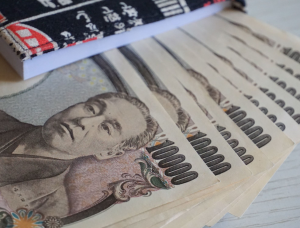
In the dynamic landscape of Asian markets, China has emerged as a focal point, steering regional trends with its recent property market upheaval. As property stocks plummet, echoing concerns over the nation’s economic stability, a ripple effect is felt across Asia. Investors are closely monitoring the fallout, questioning the broader implications for the region’s financial health. Concurrently, Japan experiences a contrasting surge in service inflation, adding another layer of complexity to the economic narrative. This article delves into the intricate dance of market forces, examining China’s property woes and Japan’s inflationary uptick, elucidating the intertwined fate of these influential Asian economies.
Asia-Pacific Markets in Flux: China’s Property Slump and Japan’s Inflation Surge Set the Tone for Global Investors
Across the Asia-Pacific region, stock markets experienced a downturn on Monday, propelled by a significant drop in the Chinese market attributed to a decline in property firms. Simultaneously, Japan witnessed a surge in service inflation, reaching a 45-month high, as indicated by data revealing a 2.3% rise in service PPI for October—its highest level since January 2020.
In China, industrial profits continued their contraction in November, albeit at the slowest pace in nearly a year, according to government-released data. Market focus now turns to the world’s second-largest economy, anticipating official factory activity figures on Thursday and the Caixin survey for the same metric on Friday.
Australia is poised to release its October inflation figures on Wednesday, providing insights into potential shifts in the central bank’s policy stance. Meanwhile, India’s GDP data for the three months ending in September is scheduled for release late Thursday.
Despite Hong Kong’s Hang Seng index partially recovering in the final trading hour, closing with a marginal dip of 0.12%, mainland Chinese markets concluded in negative territory, with the CSI 300 index falling 0.74% to 3,511.94. In Australia, the S&P/ASX 200 closed 0.76% lower at 6,987.60.
Japan’s Nikkei 225 slipped 0.53%, settling at 33,447.67, deviating from its 33-year high recorded on July 3 at 33,753.33. The Topix index also saw a decline of 0.38%, concluding the day at 2,381.76. South Korea’s Kospi experienced a marginal dip, closing at 2,495.66, while the small-cap Kosdaq was down 0.58% at 810.25.
In the U.S. on Friday, the three major indexes displayed a mixed performance in a shortened trading session. The Dow rose by 0.33%, and the S&P 500 inched higher by 0.06%, while the Nasdaq Composite, dominated by tech stocks, fell 0.11%.
Major retail shares witnessed a modest increase as Black Friday marked the commencement of the holiday shopping season. Notable gains included a 0.9% rise for Walmart, a 0.74% increase for Target, and a marginal uptick of 0.02% for Amazon. As global markets navigate the complex interplay of economic indicators, investors remain vigilant, assessing the nuanced developments shaping the trajectory of regional and international financial landscapes.
Navigating Opportunities and Challenges: Asia-Pacific Market Trends Amid China’s Property Decline and Japan’s Service Inflation Surge
The recent market fluctuations in the Asia-Pacific region, driven by China’s property market decline and Japan’s surge in service inflation, pose intricate challenges and opportunities for stock traders and prospective investors eyeing new stocks.
For stock traders, navigating the uncertainties arising from China’s property sector woes requires a keen understanding of the broader economic implications. As property stocks plummet, investors may reconsider their portfolios, assessing potential vulnerabilities and seeking opportunities in sectors less impacted by the property market turmoil. This demands a strategic approach, with an emphasis on diversification and vigilant risk management.
Conversely, Japan’s service inflation surge offers a contrasting narrative. Traders may explore avenues in industries experiencing growth due to increased service prices, such as technology and consumer goods. Identifying companies poised to benefit from this inflationary trend becomes crucial for those seeking to capitalize on Japan’s economic dynamics.
For investors seeking new stocks, the market downturn in China could unveil opportunities in undervalued property stocks or sectors resilient to the current challenges. Additionally, the surge in service inflation in Japan may prompt exploration of Japanese companies in service-oriented industries.
Examining specific examples, companies with strong fundamentals and resilience to market fluctuations, like tech giants in both China and Japan, could present attractive investment prospects. Furthermore, industries demonstrating resilience, such as e-commerce and technology amid the global retail landscape, might be appealing for investors seeking stability.
In conclusion, the evolving market dynamics in Asia-Pacific demand astute analysis and a nuanced investment approach. While challenges persist, strategic investors and traders can leverage the situation to identify undervalued assets and capitalize on emerging opportunities within the shifting economic landscape.
- SEO Powered Content & PR Distribution. Get Amplified Today.
- PlatoData.Network Vertical Generative Ai. Empower Yourself. Access Here.
- PlatoAiStream. Web3 Intelligence. Knowledge Amplified. Access Here.
- PlatoESG. Carbon, CleanTech, Energy, Environment, Solar, Waste Management. Access Here.
- PlatoHealth. Biotech and Clinical Trials Intelligence. Access Here.
- Source: https://www.forexnewsnow.com/top-stories/asia-pacific-economic-crossroads-unraveling-chinas-property-turmoil-and-japans-inflationary-surge/
- :has
- :is
- ][p
- 200
- 2020
- 225
- 25
- 300
- 33
- 500
- 60
- 66
- 67
- a
- According
- across
- activity
- adding
- Additionally
- also
- Amazon
- Amid
- an
- analysis
- and
- Another
- anticipating
- appealing
- approach
- ARE
- article
- AS
- asia
- asian
- Assessing
- Assets
- At
- attractive
- Australia
- avenues
- BE
- becomes
- benefit
- Black
- Black Friday
- both
- broader
- by
- CAN
- capitalize
- central
- challenges
- China
- Chinas
- chinese
- Chinese market
- closed
- closely
- closing
- commencement
- Companies
- complex
- complexity
- Concerns
- concluded
- conclusion
- consumer
- continued
- contraction
- could
- Crossroads
- crucial
- CSI
- CSI 300
- Current
- dance
- data
- day
- Decline
- Demand
- demands
- demonstrating
- developments
- Dip
- displayed
- diversification
- dominated
- dow
- down
- DOWNTURN
- driven
- Drop
- due
- dynamic
- dynamics
- e-commerce
- Economic
- economic indicators
- economies
- effect
- emerged
- emerging
- emphasis
- ending
- evolving
- Examining
- examples
- experienced
- Experiences
- experiencing
- exploration
- explore
- factory
- Falling
- fallout
- fate
- felt
- Figures
- final
- financial
- financial health
- firms
- fluctuations
- FLUX
- focal
- Focus
- For
- For Investors
- Forces
- Friday
- from
- Fundamentals
- Furthermore
- Gains
- GDP
- giants
- Global
- global markets
- goods
- Growth
- Hang
- Hang Seng
- Health
- High
- higher
- highest
- Holiday
- Hong
- hour
- HTTPS
- identify
- identifying
- impacted
- implications
- in
- included
- Increase
- increased
- index
- indexes
- indicated
- Indicators
- industrial
- industries
- inflation
- inflation figures
- Inflationary
- Influential
- insights
- International
- intertwined
- into
- intricate
- investment
- Investors
- ITS
- January
- Japan
- Japan’s
- Japanese
- July
- Keen
- Korea’s
- Kospi
- landscape
- Late
- layer
- less
- Level
- Leverage
- like
- lower
- mainland
- major
- Major Indexes
- management
- marked
- Market
- market downturn
- market forces
- Market Trends
- Markets
- May..
- Meanwhile
- metric
- might
- mixed
- modest
- Monday
- monitoring
- months
- NARRATIVE
- Nasdaq
- Nations
- Navigate
- navigating
- nearly
- negative
- negative territory
- New
- Nikkei 225
- notable
- November
- now
- october
- of
- Offers
- official
- on
- opportunities
- or
- over
- Pace
- performance
- plato
- Plato Data Intelligence
- PlatoData
- Plummet
- Point
- poised
- policy
- portfolios
- potential
- ppi
- present
- Prices
- profits
- propelled
- property
- prospective
- prospects
- providing
- reaching
- recent
- reconsider
- recorded
- recovering
- region
- regional
- release
- remain
- requires
- resilience
- resilient
- retail
- revealing
- Ripple
- Rise
- Risk
- risk management
- ROSE
- s
- S&P
- S&P 500
- same
- saw
- scheduled
- Season
- second-largest
- sector
- Sectors
- seeking
- September
- service
- session
- set
- settling
- shaping
- Shares
- SHIFTING
- Shifts
- Shopping
- shortened
- significant
- simultaneously
- since
- situation
- Slump
- South
- specific
- Stability
- stance
- steering
- stock
- Stock markets
- Stocks
- Strategic
- strategic approach
- strong
- strong fundamentals
- such
- surge
- Survey
- Target
- tech
- tech giants
- tech stocks
- Technology
- territory
- The
- their
- These
- this
- those
- three
- thursday
- to
- TONE
- Traders
- Trading
- trajectory
- Trend
- Trends
- turns
- u.s.
- uncertainties
- understanding
- unveil
- upheaval
- Vulnerabilities
- was
- Wednesday
- while
- with
- within
- witnessed
- world’s
- year
- zephyrnet












